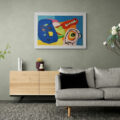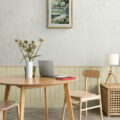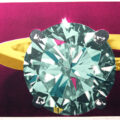The world of interior design can be overwhelming, with countless decorating styles to choose from. Each style has its unique characteristics, making it essential to understand the differences between them to help you choose the best fit for your home. Below, we’ll explore some of the most popular decorating styles and their defining features.
-
Modern Style Modern style refers to the design movement that emerged in the early to mid-20th century, characterized by clean lines, simple forms, and a focus on function over ornamentation. Modern design typically features a neutral color palette with pops of bold accent colors and uses materials like glass, metal, and concrete. Modern style is known for being sleek and minimalistic, with an emphasis on open spaces and natural light.
-
Contemporary Style Contemporary style, on the other hand, refers to what is popular and trending right now. It often incorporates elements of various design styles, making it more fluid and less defined than other decorating styles. Contemporary design typically features neutral colors, straight lines, and a mix of textures and materials. It is characterized by a focus on comfort, functionality, and simplicity.
While modern and contemporary styles are often used interchangeably, they have distinct differences. Modern design refers to a specific design movement in the past, while contemporary design is ever-evolving and reflects current trends and styles. Modern design typically has a more minimalistic and stark feel, while contemporary design tends to be softer and more relaxed.
-
Traditional Style Traditional style is characterized by rich, warm colors, ornate details, and classic furniture shapes. It is influenced by European décor and features patterns like florals, stripes, and damasks. Traditional interiors often have a formal, elegant feel with a focus on symmetry and balance.
-
Industrial Style Industrial style takes inspiration from factories and warehouses, featuring raw materials like exposed brick, concrete, and metal. It often features high ceilings and open floor plans, with minimal furniture and a focus on functionality. Industrial style also embraces the imperfections of materials, creating a rustic and rugged feel.
-
Bohemian Style Bohemian style is eclectic and free-spirited, characterized by bold colors, patterns, and textures. It often incorporates items from different cultures, creating a global and well-traveled feel. Bohemian interiors are cozy and inviting, with a focus on comfort and relaxation.
In conclusion, understanding the defining features of different decorating styles can help you choose the one that best fits your personal taste and lifestyle. Whether you prefer sleek and modern, classic and traditional, or eclectic and bohemian, there is a decorating style out there for everyone.




